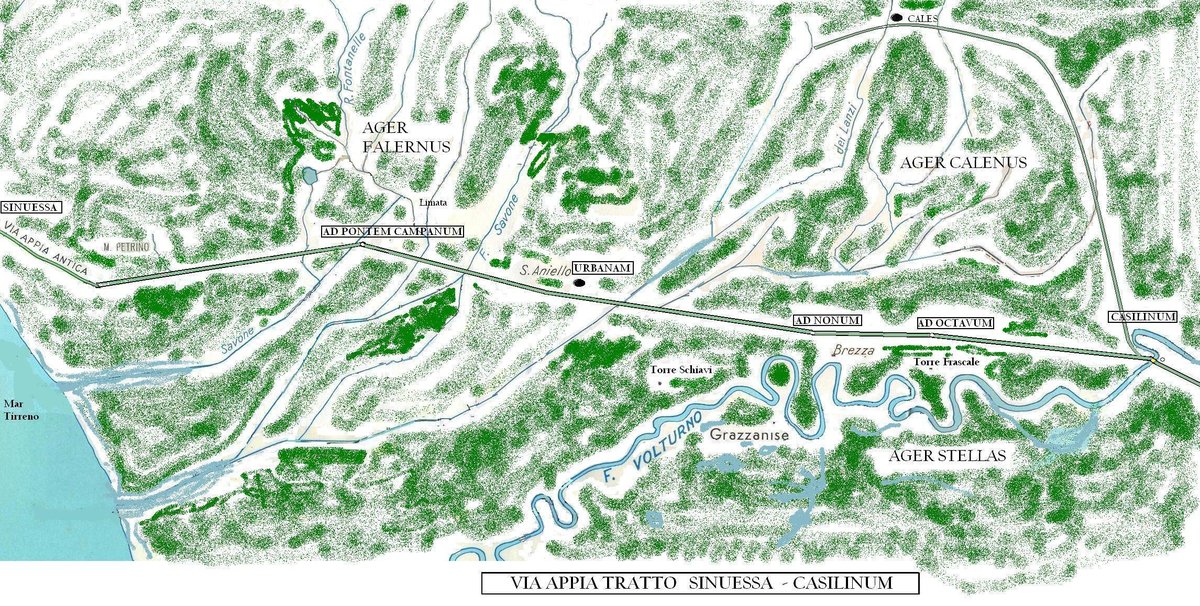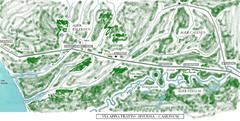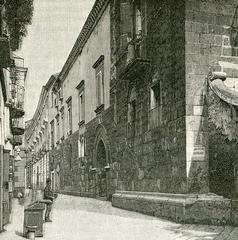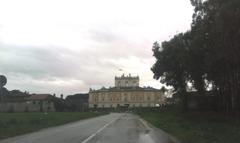
Casilinum Visiting Hours, Tickets, and Historical Sites in Capua, Italy: A Comprehensive Guide
Date: 14/06/2025
Introduction: Casilinum and Capua—Where Ancient History Meets Living Culture
Nestled in the heart of Campania, just north of Naples, Casilinum and Capua are gateways to over two millennia of Mediterranean history. From their Etruscan origins and pivotal roles in the Roman Republic, through periods of medieval transformation and resilience, these sites offer a captivating journey for visitors. Today, their well-preserved archaeological treasures, vibrant museums, and enduring traditions provide unique insights into Italy’s layered past and thriving present.
This guide delivers everything you need to plan your visit: historical context, detailed visitor information, travel tips, and thematic itineraries. Whether you’re a history enthusiast, a family traveler, or a lover of Italian heritage, Casilinum and Capua promise an enriching experience (Encyclopedia.com, Wikipedia: Casilinum, Ancient Capua, Audiala Capua Guide).
Table of Contents
- Introduction: History and Significance
- Early Foundations: Etruscan and Roman Era
- Casilinum and Capua: Urban Growth and Medieval Revival
- Archaeology and Architectural Heritage
- Museums and Modern Culture
- Visiting Today: Hours, Tickets, and Access
- Guided Tours, Events, and Attractions
- Practical Visitor Tips: When to Go, Getting There, Accommodation, Dining, and Safety
- Thematic Itineraries for Every Traveler
- Frequently Asked Questions (FAQ)
- Summary and Recommendations
- References
Early Foundations: Etruscan Roots and Roman Power
Casilinum, approximately 29 kilometers north of Naples, was established by the Etruscans around 600 BCE. Its strategic location on the Volturno River made it a critical center for commerce and defense—closely tied to Capua, another major Etruscan city. The foundation of Casilinum at the crossroads of the Via Appia and Via Latina enabled it to become a major trading hub (Encyclopedia.com, Wikipedia: Casilinum).
During the Second Punic War, Casilinum’s control of the Appian Way bridge was fiercely contested. Hannibal occupied the city in 217 BCE, but Roman forces soon reclaimed it, using Casilinum as a base for operations against Capua and other rebellious cities. Its location at the junction of significant Roman roads reinforced its military and logistical importance (Wikipedia: Casilinum).
Casilinum and Capua: Urban Growth, Decline, and Medieval Revival
By the first century CE, Casilinum and Capua were joined administratively. Capua flourished with grand architecture and a prosperous economy, thanks in part to Casilinum’s ongoing role as a trade and communication hub (Encyclopedia.com).
Instability during late antiquity culminated in 840 CE when Saracen raiders destroyed ancient Capua, sparing only the church of Santa Maria Maggiore (Ancient Capua). Survivors settled near Casilinum, which soon became the new Capua and grew into a powerful Lombard principality, later joining the Kingdom of Sicily in 1156.
Archaeology and Architectural Heritage
Modern Capua stands atop layers of ancient Casilinum. Archaeological excavations reveal Roman-era remains, including a three-arched Roman bridge and artifacts buried up to 25 feet below today’s streets (Wikipedia: Casilinum). The Capua Amphitheater, built in the 1st century CE, is the second largest in Italy—once hosting up to 60,000 spectators and featuring intricate underground passages (audiala.com, reggiadicaserta.cultura.gov.it).
Other highlights include:
- Museo Campano: Renowned for its Matres Matutae statues (mother goddess figures) and Roman mosaics.
- Porta Napoli and Parco delle Fortificazioni: Explore Roman and medieval city gates and defensive walls.
- Mithraeum: A unique underground sanctuary dedicated to the god Mithras, accessed by guided tour (veronikasadventure.com).
Museums and Modern Culture
Capua’s museums and historic sites are complemented by a lively contemporary scene:
- Museo Archeologico Campano: Showcases Etruscan, Samnite, and Roman artifacts, including the celebrated Matres Matutae statues.
- The Gladiator Museum: Adjacent to the amphitheater, it delves into the life and legend of local gladiators, including Spartacus.
- Theater and Festivals: The historic Teatro Ricciardi offers plays and concerts, while annual festivals celebrate Capua’s history and traditions (audiala.com, things.in).
Local cuisine reflects centuries-old recipes, with specialties like handmade pasta, wood-fired pizza, and the unique fish cappuccio. Artisan shops and weekly markets offer local crafts and foods.
Visiting Casilinum and Capua Today: Hours, Tickets, and Access
Capua Amphitheater
- Hours: Daily 9:00 AM–7:00 PM (last admission 6:00 PM)
- Tickets: €8 adults, €5 EU citizens 18–25, free for under 18s and residents. Purchase online or at the entrance.
- Accessibility: Wheelchair access and special tours for visitors with disabilities.
Museo Campano
- Hours: Tuesday–Sunday 9:00 AM–5:00 PM; closed Mondays.
- Tickets: €5 general, with reductions for students and seniors. Entry available onsite and online.
Other Sites
- Porta Napoli and Parco delle Fortificazioni: Free public access.
- National Archaeological Museum of Ancient Capua: Tuesday–Sunday 9:00 AM–6:30 PM; ~€5 admission.
Guided Tours and Virtual Experiences
Bookable via the Capua tourism office or the Audiala app, with options in multiple languages. Virtual tours and interactive maps are also available.
Practical Visitor Tips
Best Times to Visit
Spring (April–June) and autumn (September–October) offer mild weather and fewer crowds (thetouristchecklist.com). Summer can be hot and busy; winter is quieter, with local festivities.
Getting There
- By train: Naples to Capua in ~40 minutes.
- By car: A1 motorway; ample parking near the center.
- From the airport: Naples International Airport with taxi/shuttle options.
Accommodation and Amenities
A variety of hotels, B&Bs, and agriturismi cater to all budgets. Central locations offer easy access to attractions, and countryside stays provide a rural retreat (thetouristchecklist.com).
Dining
Enjoy Campanian cuisine at local trattorias. Reserve in advance during weekends or festivals, and try regional desserts and wines.
Safety and Comfort
Capua is tourist-friendly; standard precautions apply. Dress modestly for church visits and comfortably for walking tours, especially in warm weather (mamalovesitaly.com).
Thematic Itineraries
Ancient Roman Heritage Trail
- Morning: Amphitheater and Gladiator Museum tour.
- Afternoon: National Archaeological Museum and Roman bridge remains.
- Evening: Dine at a trattoria with Roman-inspired specialties.
Art, Culture, and Local Life
- Explore Capua’s historic center, artisan shops, and participate in seasonal festivals.
Nature and Countryside
- Walk or bike in the countryside, visit an agriturismo, and picnic along the Volturno River.
Family-Friendly Exploration
- Museum workshops, amphitheater visits, gelato tastings, and park time for kids.
Frequently Asked Questions (FAQ)
Q: What are the opening hours for the main sites?
A: Amphitheater: daily 9:00 AM–7:00 PM; Gladiator Museum: 10:00 AM–6:00 PM (closed Mondays); Museo Campano: Tuesday–Sunday 9:00 AM–5:00 PM.
Q: How do I buy tickets?
A: Online via official websites, at site entrances, or through local tourist offices.
Q: Are guided tours available?
A: Yes, in multiple languages, bookable online or locally.
Q: Is the site accessible for visitors with disabilities?
A: Major attractions offer wheelchair access and accommodations; check in advance for specific needs.
Q: What are the best photography spots?
A: Amphitheater arena and tunnels, Roman bridge, and the medieval center.
Summary and Recommendations
Casilinum and Capua are living museums—places where Etruscan ingenuity, Roman ambition, and medieval resilience converge. Visitors can stroll through ancient streets, marvel at grand amphitheaters, and immerse themselves in vibrant festivals and culinary traditions. Careful planning—using online ticketing, guided tours, and seasonal tips—ensures a rich and comfortable experience.
To get the most from your visit:
- Download the Audiala app for up-to-date maps, audio guides, and ticketing.
- Book in advance during high season.
- Explore related historical trails and local markets.
- Engage with local festivals and cuisine.
For further details and official updates, consult trusted sources:
- Encyclopedia.com
- Wikipedia: Casilinum
- Ancient Capua
- Audiala Capua Guide
- reggiadicaserta.cultura.gov.it
- thetouristchecklist.com
Images and interactive maps to enhance your visit are available via the Audiala app and official tourism websites.


